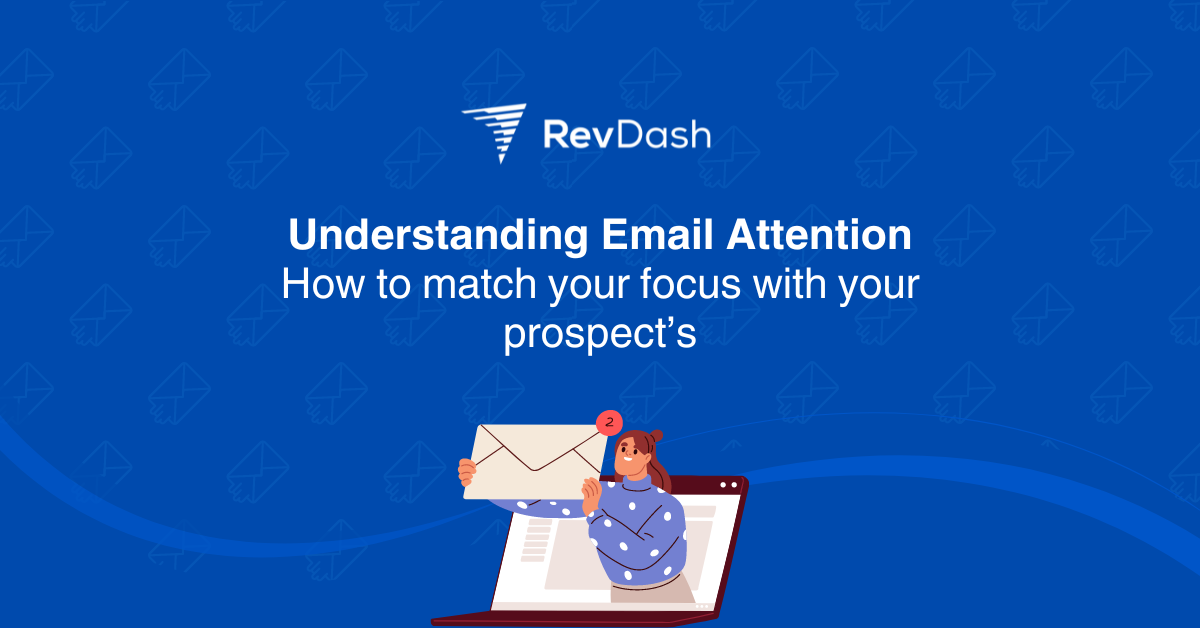Crafting a perfect outreach email is a skill that SDRs and anyone involved in sales outreach must master. However, there’s often a discrepancy between where you, as the sender, place your focus and where your prospect’s attention lands. Understanding this difference is key to improving your open and response rates.
In this blog post, we’ll explore where your attention goes when writing emails versus where your prospect’s attention is focused when they receive it. Plus, we’ll provide actionable tips to help align these perspectives for more effective communication.
The Sender’s Perspective: Where’s Your Attention?
When you sit down to write an email, your focus typically shifts between several areas:
- Personalization
You aim to customize the message, adding details that resonate with the recipient. Whether it’s mentioning their company or referencing a recent achievement, the goal is to stand out. - Clarity and Structure
You want your email to flow logically, with a clear introduction, body, and call-to-action. This organization ensures your message is professional and easy to understand. - Subject Line
You spend considerable time on crafting a subject line that catches attention. It’s crucial because it can make or break whether your email gets opened. - Value Proposition
You think deeply about how to convey the value your product or service can provide. This is often the core of your message, detailing how you can solve a specific problem for your prospect. - Call-to-Action (CTA)
Your attention is on getting them to take a next step—be it booking a call, downloading a resource, or replying. You aim for the CTA to be clear and enticing.
While these areas of focus are essential, they don’t always align with where your prospect’s attention goes when they see your email in their inbox.
The Prospect’s Perspective: Where’s Their Attention?
Here’s a reality check: your prospect’s attention is fleeting and highly selective. On average, a prospect will spend less than 11 seconds skimming your email before deciding what to do with it. Here’s where their attention typically lands:
- Subject Line
This is the first thing they see, and it determines whether your email is opened or ignored. A subject line that’s too vague, overly salesy, or irrelevant will lose them instantly. - Preview Text
The snippet of text that follows the subject line plays a big role. It’s like a second chance to catch their interest. If it’s uninteresting, your email may never get opened. - Email Length and Format
If they open the email, the next step is to skim. Their eyes quickly gauge how much time it’ll take to read. Long paragraphs or walls of text can be an immediate deterrent. - Visual Cues
Your prospect will naturally be drawn to bold text, bullet points, and any content that breaks up the monotony. These elements help convey the key points even if the full email isn’t read. - Value Relevance
Prospects are looking for one thing: “What’s in it for me?” If they don’t see an immediate benefit, they’ll move on.
Aligning Your Attention with Theirs: Key Strategies
To create effective emails, you need to ensure that where you place your attention aligns with where your prospect’s attention goes. Here’s how:
- Use Concise and Catchy Subject Lines
Aim for 5-7 words that quickly communicate value or spark curiosity. Avoid being generic or overly formal. Instead, be direct and clear. - Optimize Preview Text
Don’t let this space go to waste. It’s your opportunity to reinforce the subject line and build interest. Make it compelling and add a hint of what’s inside. - Create Skimmable Content
Break up your email into small chunks. Use bullet points, numbered lists, and short sentences. A quick scan should reveal the core message. - Highlight Key Points
Use bold or italicized text for important information, but don’t overdo it. Highlighting too much can make the email seem busy and uninviting. - Position Your Value Proposition Early
Get to the point quickly. Prospects don’t have time to sift through fluff. Place your value proposition within the first two sentences. - Craft a Clear CTA
Don’t hide your call-to-action at the end. It should be visible, clear, and easy to respond to. Try something like, “Schedule a 10-minute call” instead of “Let me know if you’re interested.”
Final Thoughts: Understanding and Improving Email Communication
When writing outreach emails, keep in mind that your attention often differs from your prospect’s. By shifting your focus to align more closely with their behavior, you’ll increase your chances of making a connection and starting a conversation.
The next time you sit down to write, consider these strategies to make your emails more effective and compelling.



